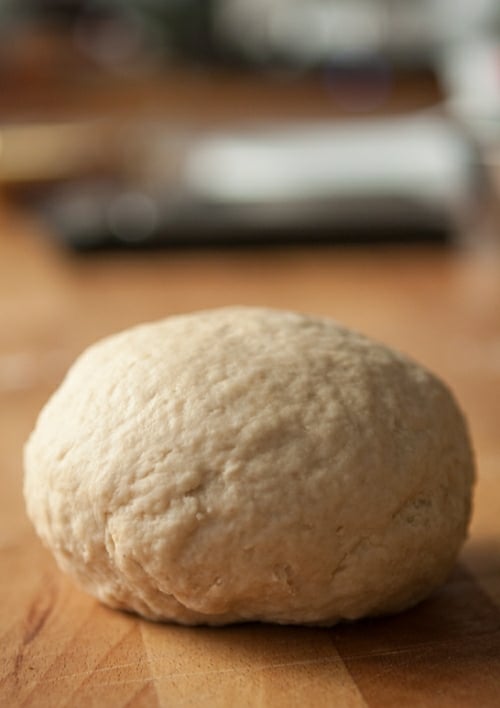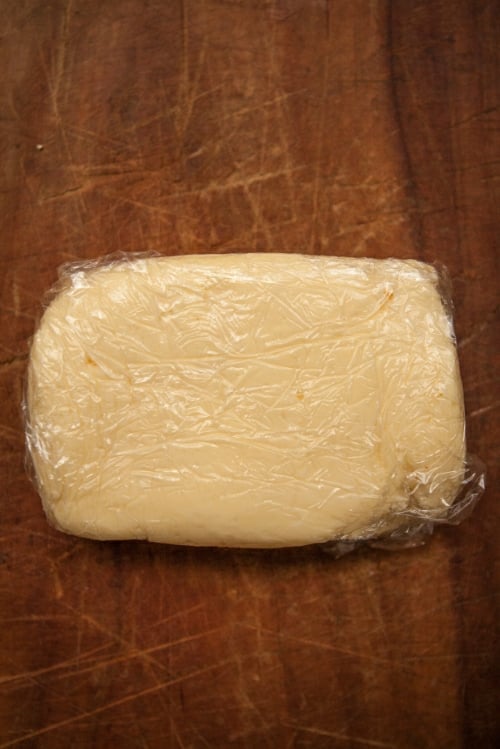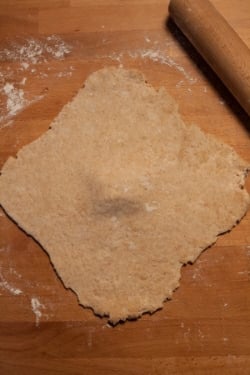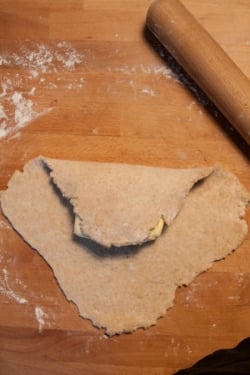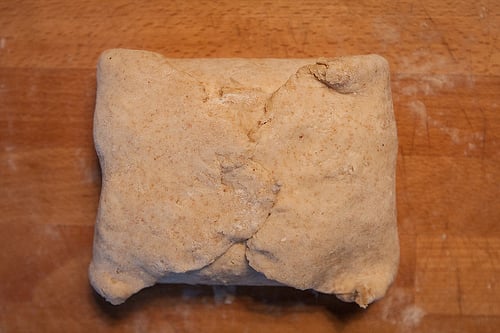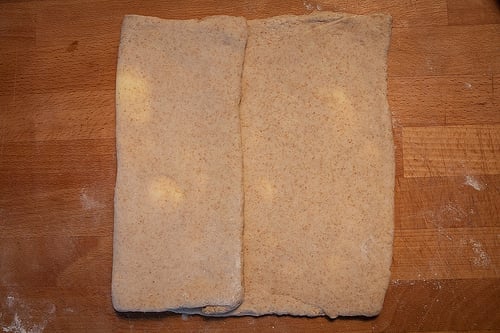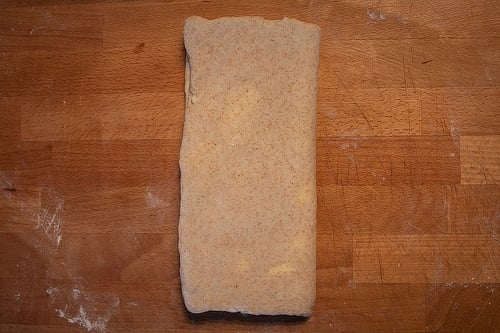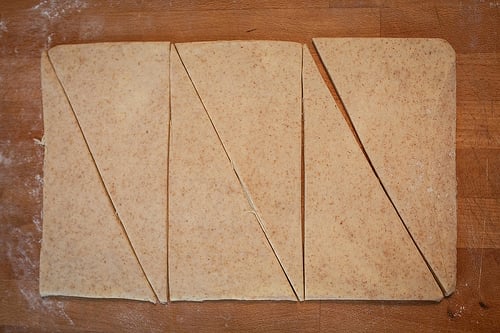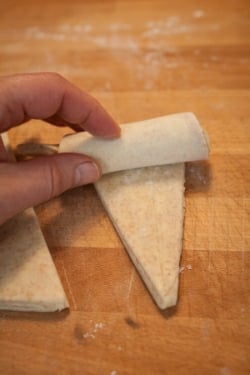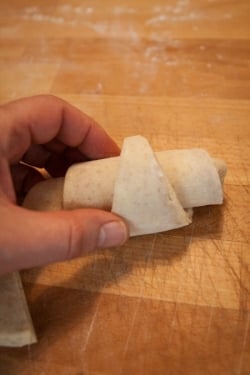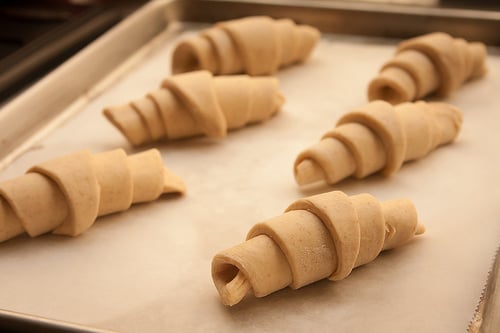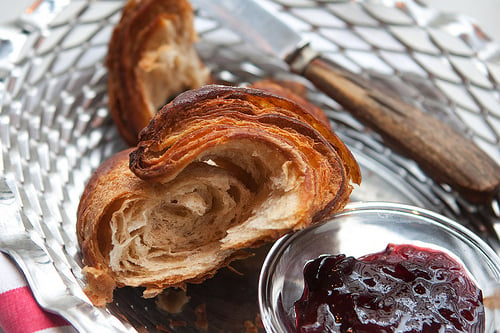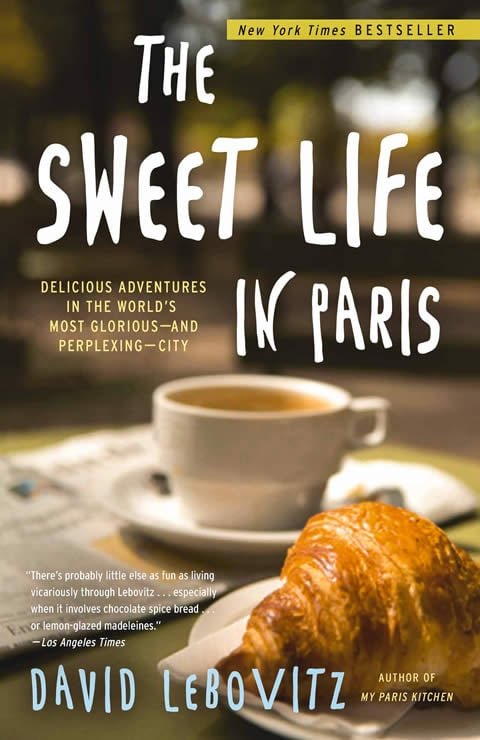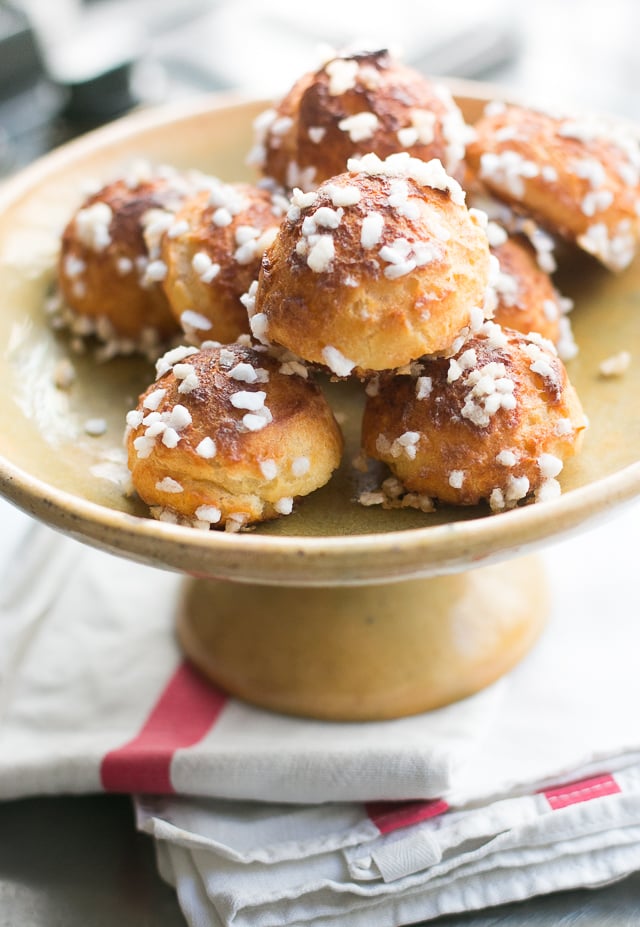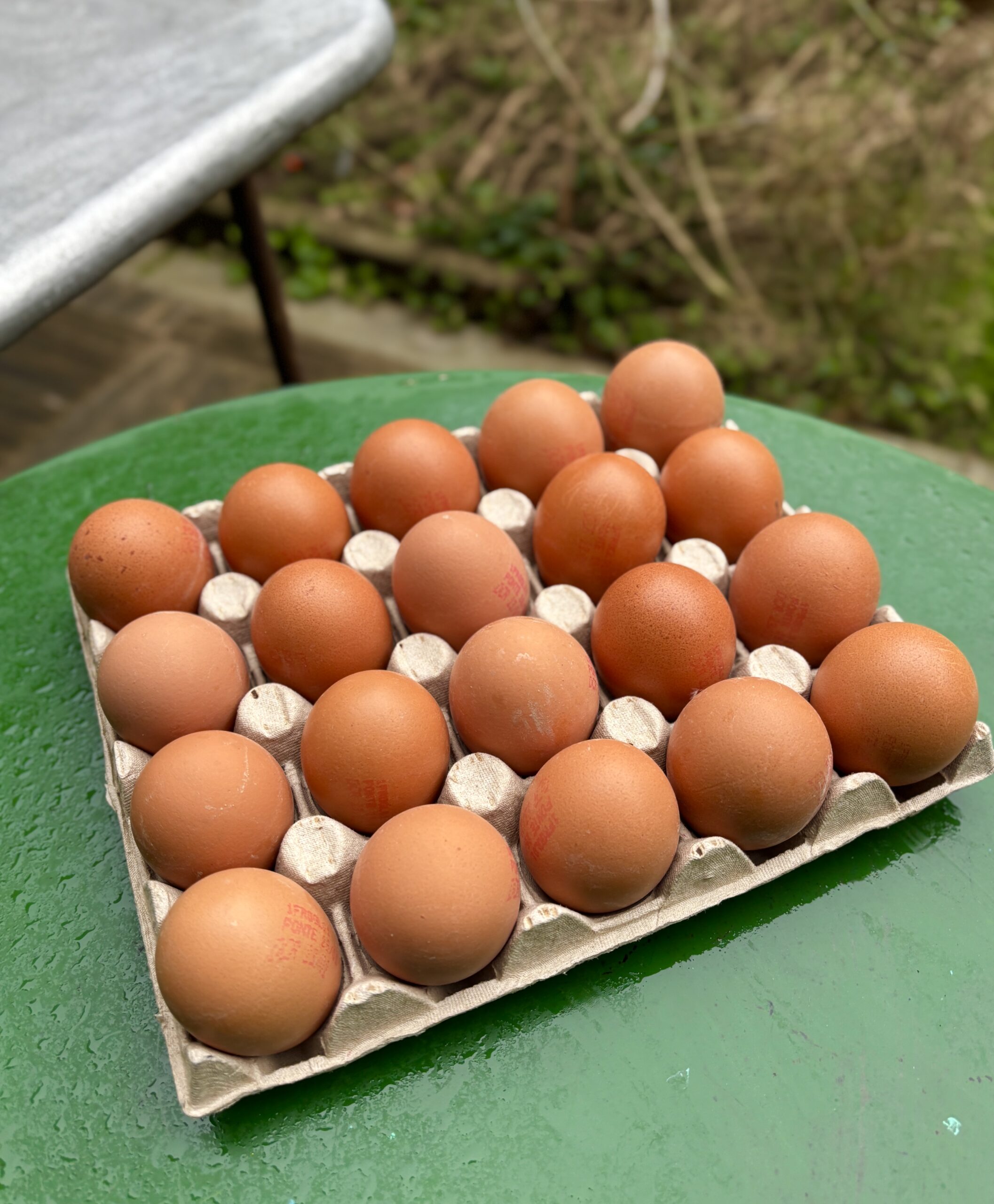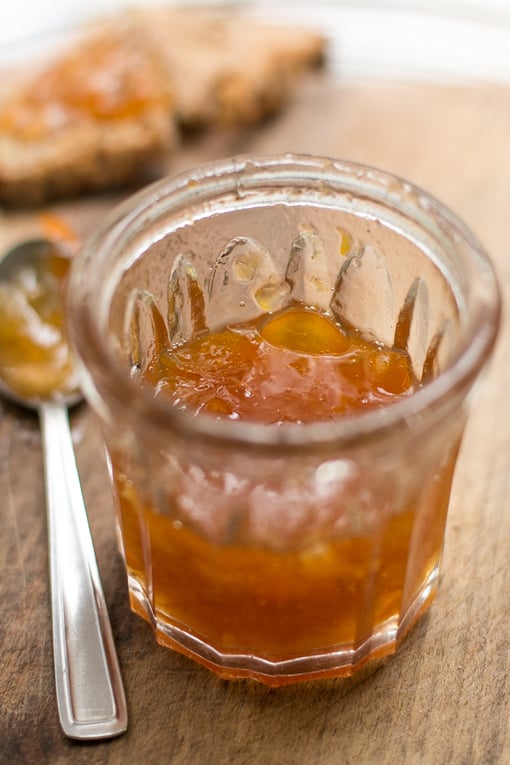Whole Wheat Croissants
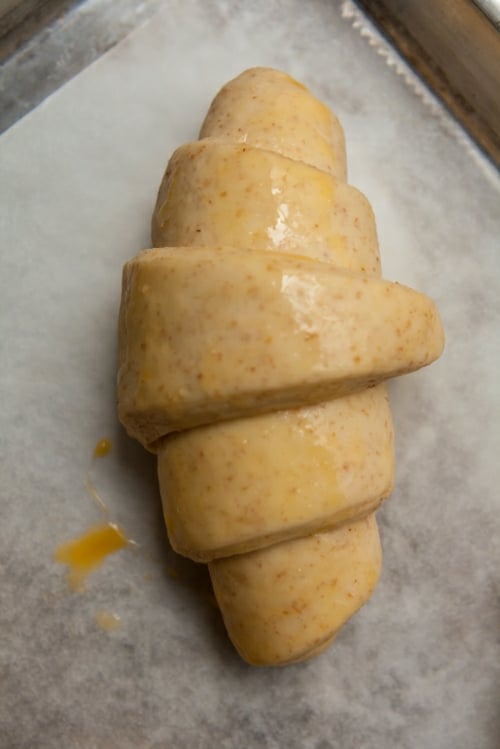
Although there’s some dispute as to where the croissant was invented, it’s become an iconic symbol of Paris. Or at least of Paris bakeries. The most popular story claims that croissants were invented in Austria, during (or after) a period of conflict with Turkey in the 1600s, whose symbol is a crescent. And people were happy to bite into, and chew, a pastry representing their nemesis.
Food everywhere is wrapped up in lots of “who made what,” and there are endless discussions about what belongs to whom, who made it first, who makes is better, who is allowed to claim it, and who has permission to use it. (And so far, I haven’t seen any signs of an international organization overseeing all of that.) So depending on who you believe, it may have been the Austrians, the French, or another butter and pastry-loving country. But it’s hard to imagine Paris without croissants.
One thing that often surprises people who don’t live in France is that no one would make his or her own croissants. That said, I am sure there are a handful of people in this country of 66 million that make their own croissants. But me? I’m happy to be able to amble down the street, for a single euro, get a pretty decent croissant from a local baker, where they’re stacked high in the morning, ready for the crush of customers, racing in for a warm croissant, fresh from the oven, to snack on with their morning coffee.
Yet one thing you don’t find are croissants made with whole wheat flour, which gives the flaky pastries a slightly nutty taste. That earthy edge takes away any guilt (although croissants aren’t as rich or sinful as some people think; these croissants are just shy of a couple of tablespoons of butter per pastry), and it’s fun to surprise people with something different in the bread basket.
Once I got started making croissants at home, it was hard to stop.
And I made three batches last week, surprising my friends with bags of freshly made croissants.
Making croissants isn’t difficult at all and if you can use a rolling pin, you can make croissants. There is bit of waiting time between turning and folding the dough, but let me tell you, nothing is more gratifying that the smell of cooking butter filling the kitchen while your croissants bake. (I sometimes think those bakeries in the Paris métro stations have the smell of butter pumped into the stations, to boost business.) But even better, pulling out a baking sheet of fresh croissants is one of the few thrills in life.
If you’re anything like me, you will hardly be able to control yourself if you have a tray of puffed up, just-baked pastries in front of you. And you have my permission to go ahead and rip into one because if you don’t eat a croissant while it’s warm, perhaps with an additional swipe of good butter and some homemade jam, you’re missing out on one of the great pleasures in life.
Whole Wheat Croissants
- 1 1/4 cups (175g) white flour, bread flour (preferably) or all-purpose flour
- 3/4 cup (105g) whole wheat flour, (see Notes)
- 2 teaspoons active dry yeast
- 2 tablespoons sugar
- 2/3 cup (160ml) whole or lowfat milk, very slightly warmed
- 1 1/4 teaspoons kosher or sea salt
- 5 1/2 ounces (160g) unsalted butter, cold and cubed
- 1 egg
- pinch of salt
Day 1
- In a small bowl, mix together the white and whole wheat flours. Prepare the dough by mixing the yeast with the milk and sugar in the bowl of a stand mixer, or stir it together in a large bowl. Stir in about one-third of the flour mixture and let the mixture stand until it starts to bubble, 10 to 15 minutes.
- Mix in the rest of the flour and the salt, and stir until all the ingredients are combined. Knead the dough on a lightly floured countertop a few times, just enough to bring it together into a cohesive ball, but do not overknead. 10-15 seconds should do it.
- Put the dough in a bowl, cover with plastic wrap, and let the dough rest in the refrigerator overnight. (Or for at least 6 hours.)
Day 2
- Put the cold butter in the bowl of a stand mixer with the paddle attachment and beat on medium-high speed until there are no lumps in the butter, about 15 seconds. (If you don’t have a stand mixer, whack the butter with a rolling pin, turning it a few times, until it’s a cold paste.) Lay a piece of plastic wrap on the counter and place the butter in the middle. Enclose the butter and shape it into a 4- by 3-inch (10 by 8cm) rectangle. Chill the butter for 20 to 30 minutes.
- Remove the dough from the refrigerator. Roll the dough on a lightly floured countertop, so it forms a diamond shape with four flaps – two on top, two on the bottom, leaving the dough raised a bit in the center. (See the photo in the post.)
- Unwrap the chilled rectangle of butter and place it in the center. Fold the flaps over the butter, sealing the butter completely, and whack the dough with a rolling pin to flatten it out. Roll the dough into a 12- by 9-inch (30 by 22cm) rectangle.
- Lift up one-third of the left side of the dough and fold it over the center. Then lift the right side of the dough over the center, to create a rectangle. Take the rolling pin and press down on the dough two times, making an X across it. Mark the dough with one dimple with your finger to remind you that you’ve made one “turn”, wrap it in plastic wrap, and chill the dough for 45 to 60 minutes.
- Do the next turn of the dough the same way, rolling and folding the dough again, making 2 dimples with your finger in the dough, then chill it for another 45 to 60 minutes. (The resting period between steps #4 and #5 can be longer in case you have other things to do. Feel free to let it rest a couple of hours between each turn. It’ll be fine.)
- Do the last turn and folding of the dough and let it chill for an hour. (The dough can be chilled overnight at this point, or frozen.)
- To shape the croissants, line a baking sheet with parchment paper or a silicone baking mat. Unwrap the dough and roll it out on a lightly floured countertop until it’s a 12- by 9-inch (30 by 22cm) rectangle. Trim the edges off with a sharp chef’s knife and cut the dough into 3 rectangles, then cut each rectangle diagonally, making 6 triangles (as shown in the post.)
- Take one triangle and roll to lengthen it to 11 inches (28cm) long. Starting at the wide end, roll the croissant up toward the point, not too-tightly. Set it point-side-up on the baking sheet and roll the rest of the croissants the same way.
- Cover the baking sheet with a large plastic bag (such as a clean trash bag), close it, and let the croissants proof in a warm place until the croissants are nearly doubled and puffed up, which will take 1 1/2 to 2 hours. (If you wish, you can chill the rolled croissants overnight. Take them out of the refrigerator and let them proof in a warm place, as indicated.)
- Preheat the oven to 400ºF (200ºC.) Mix the egg with a pinch of salt and brush each croissant with the glaze. Bake the croissants for 5 minutes, then reduce the heat of the oven to 350ºF, and bake for 20 to 25 minutes, until browned. Some butter may seep out during baking, which is normal.
Notes and Tips for Baking Croissants
– Normally I don’t specify “premium-style” products, but using a high-fat butter is a good idea. It’s sometimes labeled “European-style” butter in the United States. With a bit less water and more fat, it helps create flakier croissants. But using regular butter is just fine.
– Bread flour is used because it is stronger and will yield a better structure. It’s available in well-stocked supermarkets, natural food stores, and online. You can also use all-purpose flour.
– This recipe will work using all white flour. Replace the whole wheat flour with regular all-purpose flour. I’ve not used all whole wheat flour but there is a recipe here if you want to attempt it.
– In France, I used T110 whole wheat flour, which is the equivalent of American whole wheat flour and will make croissants with a coarser texture. I’ve also made them with T90 flour as well, which has a less-earthy taste and is similar to whole wheat pastry flour. Whole wheat pastry flour will yield a lighter croissant, although with less whole wheat flavor.
– I use active dry yeast, since that’s what I’m used to baking with. If you wish to use fresh yeast or instant yeast, check the manufacturer’s website for the correct conversions they recommend.
– Brush off excess flour as you’re rolling. Too much flour will cause the croissants to be tough.
– After you roll the dough, as you are folding it in thirds, stretch it a bit to get the ends even.
– Some bakers do 4 turns of the dough. I normally do 3. If you want to try 4 with this recipe, please let me know how they turn out.
– You can easily double this recipe. If so, let the dough chill at least an hour between each turn.
– Croissants are best eaten the day they’re made. If serving the next day, rewarm them in a low oven for about 10 minutes, until heated through. Once baked and cooled, croissants can be frozen in an air-tight bag for up to two months.

